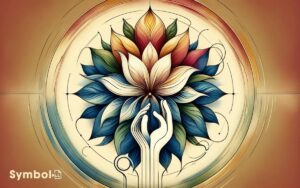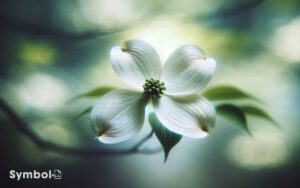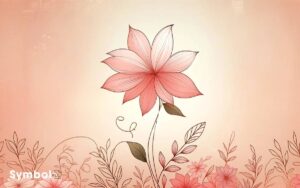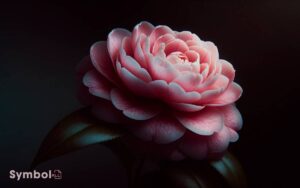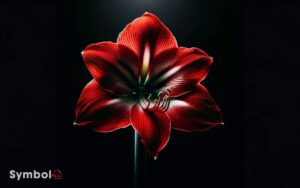What Does Carnation Flower Symbolize? Love, Admiration!
Carnations, hailing from the Mediterranean, symbolize a broad spectrum of emotions and virtues, deeply influenced by their colors. You’ll find that red carnations express love and admiration, rooted in their vibrant hue and emotional intensity.
White variants stand for purity, innocence, and peace, often chosen for weddings to represent new beginnings. Pink carnations convey affection and gratitude, especially a mother’s love, making them a favorite on Mother’s Day.
Each color reflects a unique message, from apologies with striped patterns to capricious moods with purple. Exploring these symbols further reveals the intricate relationships between human emotions and floral expressions.
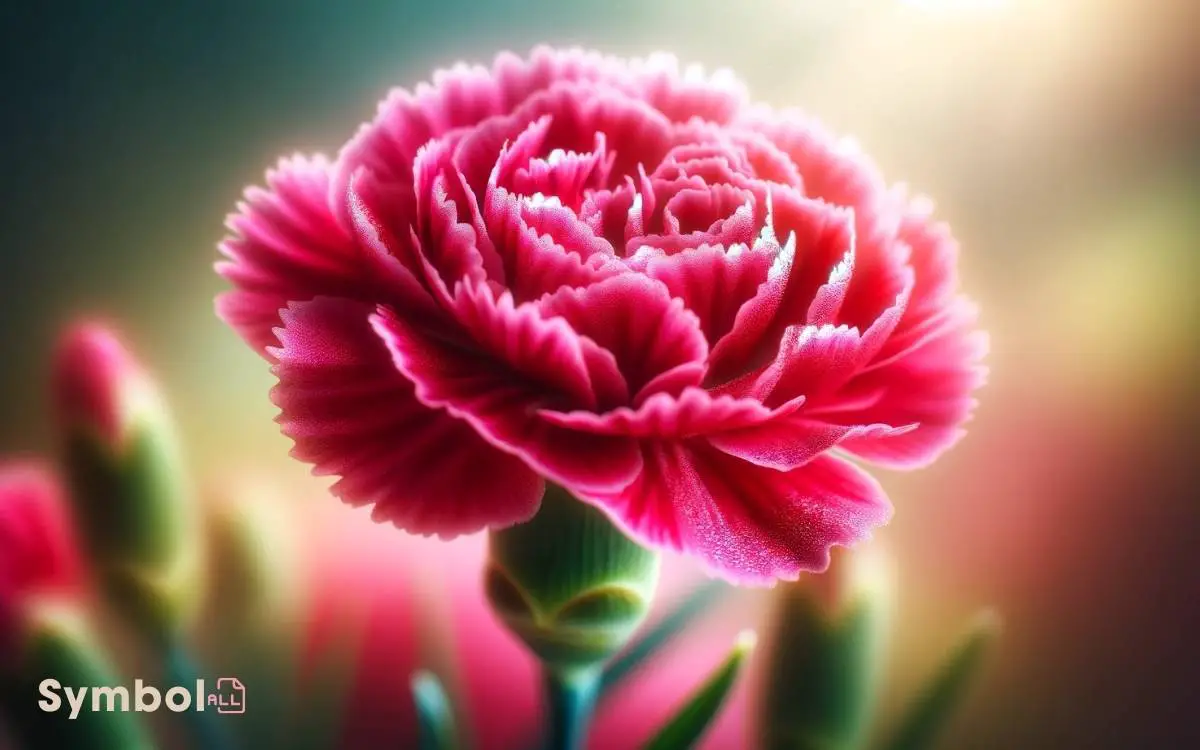
Key Takeaways
The Origins of Carnations
Tracing back to ancient times, the carnation has been revered for its beauty, durability, and its myriad symbolic meanings across cultures.
Scientific analysis reveals that carnations, belonging to the genus Dianthus (meaning ‘flower of the gods’ in Greek), may have originated in the Mediterranean region.
This area’s diverse climates allowed for the natural selection of hardy variants, contributing to the flower’s robustness.
Historical texts and botanical studies indicate that these flowers were cultivated over 2,000 years ago, suggesting a long-standing appreciation by human societies.
The ancient Greeks and Romans, for instance, utilized carnations in art and decor, signifying deep admiration and affection.
These historical roots underscore the carnation’s enduring significance, framing it not just as a floral artifact but as a pivotal element in cultural and botanical history.
Carnation Color Meanings
As you explore the symbolism of carnation flowers, it’s important to understand how color variations convey distinct messages.
Red carnations symbolize deep emotions, ranging from love to admiration, while white carnations represent purity and innocence.
Pink carnations, on the other hand, are associated with affection and gratitude, illustrating the nuanced communication through floral hues.
Red Carnation Emotions
Red carnations symbolize deep love, admiration, and affection, presenting a complex interplay of emotions and signaling intense, passionate relationships. This variety of carnation, with its vibrant red hue, conveys a potent message of heartfelt emotions.
Its symbolism is rooted in a scientific understanding of color psychology, where red is often associated with strong feelings.
Analyzing the emotional resonance of red carnations through a detailed, scientific lens reveals their capacity to evoke a profound response.
These flowers don’t just represent emotions superficially; they’re deeply ingrained in human psychology and cultural interpretations, making them a powerful symbol of passionate, enduring love.
White Carnation Purity
Shifting focus to white carnations, it’s evident that their symbolism of purity and innocence is deeply rooted in the nuances of color psychology and cultural interpretations, offering a stark contrast to the passionate emotions evoked by their red counterparts.
Analyzing this from a scientific perspective, the color white universally signifies cleanliness, peace, and virtue.
These flowers embody these characteristics flawlessly, making them a favored choice in contexts demanding an expression of these qualities.
Historically, they’ve been associated with good fortune and pure love, often utilized in wedding bouquets to signify the pure intention and unblemished future of the union.
Their usage isn’t merely aesthetic; it’s a deliberate choice, steeped in centuries of symbolism, to convey messages of hope, renewal, and unadulterated affection.
Pink Carnation Affection
Turning our attention to pink carnations, we find these blossoms symbolize deep affection and a mother’s undying love, a concept rooted in both botanical significance and cultural practices observed globally.
The hue of pink carnations, ranging from soft blush to vibrant fuchsia, correlates with variations in affection intensity, from tender love to gratitude.
Scientifically, the pigmentation in pink carnations results from anthocyanins, with environmental factors influencing the depth of color.
This biological underpinning intersects with cultural interpretations, where pink carnations are often chosen for Mother’s Day bouquets, embodying gratitude and admiration.
Analyzing these flowers through a socio-botanical lens, it’s evident that pink carnations carry a complex symbolism, intertwining nature’s genetics with human sentiment, making them a poignant choice for expressing affection.
Red Carnations: Deep Love
Throughout history, people have often given red carnations to express feelings of deep love and admiration. This color choice isn’t arbitrary; it’s deeply rooted in the flower’s biology and cultural interpretations.
The red carnation’s vibrant hue results from anthocyanin pigments, which, in the context of plant biology, serve not only to attract pollinators but also symbolize vitality and passion in human culture.
Scientific analysis reveals that the intensity of the red in these flowers can vary, further influencing their symbolic meaning.
Darker shades often signify a heart yearning with love, while brighter reds are associated with admiration and respect.
This nuanced symbolism demonstrates nature’s complexity and how it mirrors human emotions, allowing for a rich palette of expression within the simple act of gifting a red carnation.
White Carnations: Pure Affection
Often, white carnations symbolize pure affection and love, their pristine color reflecting innocence and unblemished adoration in various cultural contexts. This symbolism is rooted in a combination of historical associations and botanical characteristics.
Scientifically, the white carnation (Dianthus caryophyllus) exhibits a unique pigment composition, lacking the anthocyanin pigments that give other carnations their vibrant hues. This absence of color is traditionally interpreted as a sign of purity and virtue.
In analytical terms, the preference for white carnations in certain rituals and ceremonies can be traced to their visual representation of these qualities.
Studies in ethno-botany suggest that the white carnation’s association with pure affection isn’t merely cultural but may also have psychological underpinnings, influencing human emotion and interpersonal connections.
Pink Carnations: A Mothers Love
Pink carnations are universally recognized as the emblem of a mother’s undying love, reflecting a deep-rooted tradition that spans cultures and centuries.
Their symbolism is both rich and scientifically intriguing, owing to the following factors:
- Genetic Pigmentation: The distinct pink hue in carnations is the result of specific genetic variations that influence anthocyanin production, the pigments responsible for red, purple, and pink colors in plants.
- Historical Significance: Pink carnations have a storied history, with their association with maternal love dating back to ancient times.
- Cultural Interpretations: Across different cultures, these flowers are given to express gratitude and admiration towards mothers.
- Botanical Rarity: The natural occurrence of the vibrant pink shade in carnations is relatively rare, enhancing its symbolic value as a representation of unique and unconditional maternal love.
Yellow Carnations: Disappointment
Yellow carnations symbolize disappointment, embodying a complex interplay of botanical pigmentation and cultural symbolism that diverges markedly from their more positively viewed counterparts.
In the intricate language of flowers, these blooms convey messages of sorrow, rejection, or discontent. This unique symbolism derives from a confluence of historical associations and chromatic psychology.
Scientifically, the yellow hue in carnations results from specific pigment concentrations, influenced by genetic factors and environmental conditions.
Culturally, the color yellow often carries ambiguous meanings, ranging from brightness and vitality to caution and betrayal. In the context of yellow carnations, the latter interpretation prevails, making them a nuanced choice for communicating nuanced emotions.
Their use in floral arrangements or as standalone gifts therefore requires careful consideration to make sure the intended message is accurately conveyed.
Striped Carnations: Regret
You’ll find that the symbolism of striped carnations, denoting regret, stems from a complex interplay of historical and cultural factors.
These flowers serve as a nuanced medium for expressing apologies, with their pattern symbolizing a mixture of emotions.
An analysis of their origin and how various cultures interpret these blooms reveals a sophisticated language of floral communication.
Origin of Symbolism
Striped carnations, symbolizing regret, have a complex origin rooted in historical and cultural contexts. This symbolism is derived from a detailed analysis of the flower’s appearance and its usage over time.
Here are key factors contributing to this association:
- Genetic Variation: Striped patterns result from genetic mutations, which are rare and therefore historically signified deviation from the norm.
- Historical Use: In certain cultures, striped carnations were given to express apologies or regret for actions that couldn’t be taken back.
- Literary References: Literature from various periods has reinforced this symbolism by associating striped patterns with mixed emotions or sorrow.
- Botanical Characteristics: The unique visual contrast of stripes on carnations visually signifies complexity and mixed feelings, aligning with the concept of regret.
Cultural Interpretations
Exploring the cultural interpretations of striped carnations reveals how societies have imbued these flowers with the nuanced sentiment of regret through various traditions and practices.
Historically, the appearance of stripes on carnations has symbolized a complexity of emotions, where the stark contrast between the colors represents a duality of feelings.
Scientifically, the variation in petal coloration results from a genetic mutation, yet culturally, this anomaly has been interpreted as embodying the complexity of human emotions.
Specifically, the giving of striped carnations has come to convey feelings of regret, a non-verbal expression of sorrow or remorse.
This practice demonstrates the rich tapestry of meanings flowers can carry, extending beyond their aesthetic value to embody deep-seated cultural and emotional significances.
Expressing Apologies
Delving into the tradition of giving striped carnations, it’s evident that these flowers serve as a poignant symbol for expressing apologies, intricately tied to the sentiment of regret.
When you select striped carnations as a means to convey your apologies, you’re engaging in a practice that’s both culturally and emotionally significant.
Here’s why striped carnations are particularly suited for this purpose:
- Visual Symbolism: The contrast of stripes represents the acknowledgment of a mistake and the desire for forgiveness.
- Historical Precedence: Historically, these flowers have been used to express regret, embedding a deep cultural understanding of their meaning.
- Emotional Resonance: They evoke a sincere emotional response, acknowledging the complexity of the situation.
- Universality: Their symbolism is widely recognized, making them an appropriate choice across different contexts.
Purple Carnations: Capriciousness
Purple carnations, often symbolizing capriciousness, reveal the complexity of human emotions through their vibrant hue. This intriguing shade of purple conveys unpredictability and whimsical changes in feelings, akin to the sudden shifts in nature’s whims.
Scientifically, the pigmentation results from anthocyanins, compounds that vary in concentration, resulting in a spectrum of purple shades.
These variations in color intensity mirror the multifaceted nature of human emotions, suggesting that like the flower’s color, our feelings are subject to change without notice.
Analyzing the biological underpinnings, it’s clear that the capricious symbolism of purple carnations isn’t arbitrary but deeply rooted in the flower’s genetic makeup, offering a tangible metaphor for the ephemeral and unpredictable aspects of human sentiment.
The Role in Cultural Traditions
Beyond their biological and emotional symbolism, carnations hold significant roles in various cultural traditions, reflecting their multifaceted importance in human society.
- Mother’s Day Celebrations: In many countries, you give carnations to mothers on Mother’s Day. The tradition stems from the flower’s association with maternal love and devotion.
- Weddings: Carnations often feature in wedding ceremonies as symbols of pure love and good luck. Their durability makes them ideal for bouquets and decorations.
- Cultural Festivals: In some cultures, carnations are integral to festivals and religious ceremonies, symbolizing purity, faith, and the divine.
- National Symbols: Certain countries adopt the carnation as a national symbol, embodying the strength, pride, and identity of a nation.
Each of these roles contributes to the deep-rooted cultural significance of carnations across the globe.
Carnations in Art and Literature
You’ll find that carnations have held significant symbolism in Renaissance paintings, often embodying messages of love or divine fascination.
Their presence in poetry spans themes of beauty, mortality, and profound emotion, reflecting their layered meanings across time.
Contemporary art continues to explore these motifs, offering fresh interpretations that resonate with today’s audience.
Symbolism in Renaissance Paintings
Carnations hold a profound symbolism in Renaissance paintings, where they often represent love, betrothal, and the fragility of life. This symbolism isn’t arbitrary but deeply rooted in the cultural and scientific understanding of the time.
To appreciate the depth of carnations’ symbolism in Renaissance art, consider the following:
- Love and Devotion: Carnations, particularly red ones, symbolize deep love and affection. Their presence in a painting suggests a theme of love or deep admiration.
- Betrothal and Fidelity: The flower is often depicted in engagement scenes, symbolizing promises and fidelity between couples.
- Fragility of Life: The fleeting beauty of carnations reminds viewers of life’s transience, a common theme in Renaissance art.
- Religious Symbolism: White carnations, in particular, signify purity and were used to represent the Virgin Mary.
Carnations in Poetry Themes
Exploring the domain of art and literature, we find that carnations also carry significant thematic weight in poetry, where their symbolic meanings extend to convey complex emotions and ideas.
Poets often employ carnations to express notions of love, fascination, and distinction.
The flower’s diverse hues lend themselves to nuanced interpretations, where, for instance, a red carnation might symbolize deep love and admiration, while a white one could represent pure affection or lamentation.
This multifaceted symbolism allows poets to weave intricate narratives that explore human feelings and societal norms through the lens of natural beauty.
Analyzing such poetry, you’ll notice how carnations serve not just as decorative elements but as pivotal thematic devices that enhance the emotional depth and resonance of literary works.
Modern Interpretations in Art
In contemporary art and literature, the carnation’s symbolism has evolved, reflecting broader cultural and social shifts.
This evolution can be examined into several key areas:
- Representation of Identity: Carnations have been used to explore themes of identity and self-expression, often embodying the fluidity and complexity of individuality in modern society.
- Political Statements: Artists and writers have utilized carnations to make poignant political statements, symbolizing peace, resistance, or solidarity in times of social unrest.
- Cultural Significance: The flower’s role in cultural rituals and traditions has been reimagined, showcasing the changing dynamics of cultural heritage in a globalized world.
- Emotional Depth: Modern interpretations explore the carnation’s emotional symbolism, delving into themes of love, grief, and resilience with a nuanced understanding of human experiences.
Symbolism in Weddings
You’ll find that the choice of carnations in wedding ceremonies carries deep symbolic meanings, ranging from love and fascination to distinction and divine love.
Delving deeper, the presence of carnations at weddings isn’t merely a matter of aesthetic preference but a deliberate selection rooted in historical and cultural symbolism. Each color of carnation brings its own layer of meaning.
For instance, white carnations symbolize pure love and good luck, making them a popular choice for bridal bouquets. Red carnations, signifying deep love and admiration, often adorn ceremonies as declarations of heartfelt commitment.
The longevity and resilience of the carnation, mirroring the qualities desired in a marital union, further cement its status as a preferred choice for expressing enduring love and devotion in the matrimonial setting.
Mothers Day Significance
Reflecting on the significance of Mother’s Day, it’s evident that carnations hold a special place as symbols of a mother’s undying love and care. The association of carnations with Mother’s Day isn’t arbitrary but deeply rooted in their characteristics and historical context.
To understand this connection more deeply, consider the following points:
- Color Symbolism: The distinct colors of carnations convey different messages. Pink carnations, in particular, symbolize a mother’s unconditional love.
- Longevity: Carnations are renowned for their long-lasting flowers, paralleling the enduring nature of a mother’s love.
- Historical Significance: The tradition of wearing carnations on Mother’s Day originated in the early 20th century, signifying respect and honor for one’s mother.
- Versatility: Carnations’ wide range of colors and their ability to adapt to various environments mirrors the versatile and resilient nature of mothers.
Carnations in Mourning Rituals
Beyond their celebratory importance, carnations also play a pivotal role in mourning rituals, serving as symbols of love and remembrance for those we’ve lost. The choice of color greatly affects the conveyed message during these times.
| Color | Symbolism | Context in Mourning |
|---|---|---|
| White | Purity & Innocence | Conveys respect and remembrance |
| Pink | Rememberance | Symbolizes a love that is undying |
| Red | Deep Love & Admiration | Represents heartfelt sorrow and missing the departed |
Analyzing the use of carnations in mourning rituals, it’s clear that these flowers carry a profound depth of meaning. They’re not just selected for their beauty but for the intricate symbolism that communicates emotions words cannot always express.
Modern Interpretations and Uses
In contemporary settings, carnations have evolved beyond traditional symbolism, finding diverse applications across various modern cultural and social practices.
This evolution reflects broader changes in societal values and technological advancements, leading to novel uses that were previously unimagined.
Here are four key areas where carnations have found new relevance:
- Biotechnology: Researchers are studying carnations for genetic modifications that could enhance their color spectrum and longevity, potentially revolutionizing the floral industry.
- Cultural Festivals: Carnations have become symbols of pride and celebration in events, embodying themes of love, fascination, and distinction.
- Artistic Inspiration: Artists and designers frequently use carnations as motifs, exploring their aesthetic and symbolic qualities in contemporary art and fashion.
- Eco-Friendly Practices: The cultivation of carnations is being adapted to include sustainable farming techniques, reducing environmental impact and promoting biodiversity.
Conclusion
To sum up, carnations aren’t just another flower in the bouquet of nature’s offerings. Like stars in a vast cosmos, each color radiates its unique signal, from deep love’s red to the pure affection of white and the maternal pink hue.
These flowers weave through human rituals, from celebrating love in weddings to honoring mothers and commemorating the departed.
Modern interpretations continue to evolve, yet the carnation remains a timeless symbol, deeply embedded in our cultural and emotional landscapes.

